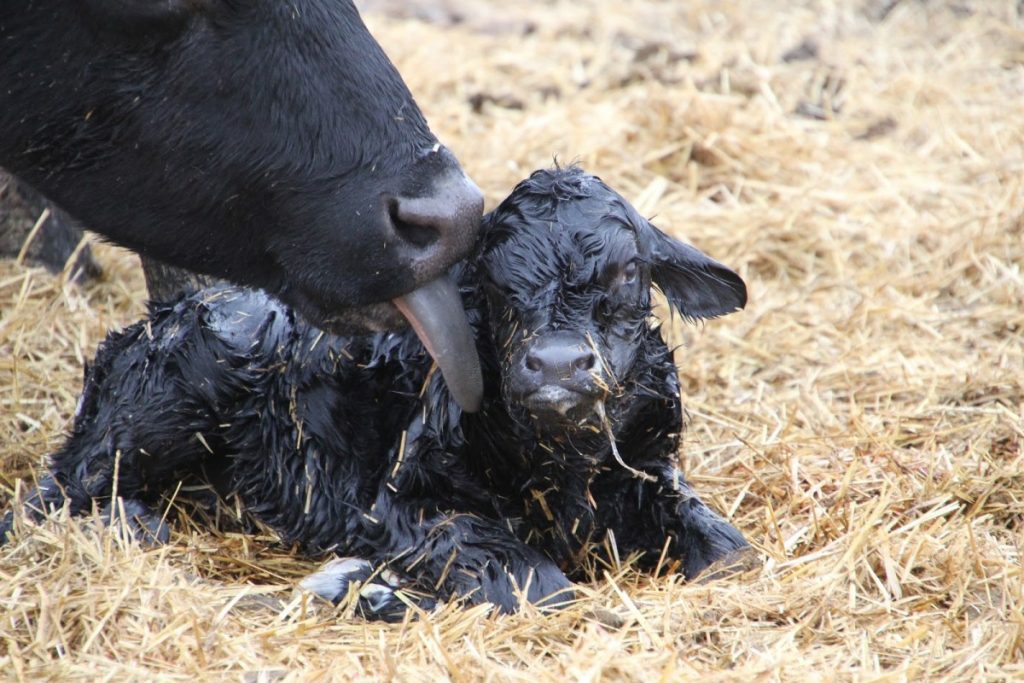
Mark Johnson, Oklahoma State University Extension Beef Cattle Breeding Specialist, offers herd health advice as part of the weekly series known as the “Cow Calf Corner,” published electronically by Dr. Peel, Mark Johnson, and Paul Beck. Today, Johnson talks about calving.
When you come upon that cow or heifer in the process of calving and followed the timelines given in the Cow-Calf Corner article “When to Assist With Calving” from the February 12, 2024 newsletter, how do you proceed? The steps to examining and assisting heifers or cows in need during the calving process is the topic of this article.
Preparing to Assist
Before starting the exam, it is critical to be as clean as possible. Even when the calf is saved, longer term the reproductive performance of the cow may suffer if bacteria is introduced into the cow from the hands and arms of the person assisting or the equipment used. Following is the suggested list of equipment to have on hand (if possible) when assisting in the birth process:
- A clean, well-lighted barn or shelter
- A chute, head catch or halter to restrain the cow
- 2 clean buckets with water (disinfectant in 2nd bucket)
- Soap (for cleaning you and the cow)
- Disinfectant
- Obstetrical lube
- Paper towels
- Calving chains and handles (in the bucket with water and disinfectant)
- Calf puller
- Plastic sleeves
- The phone number of your Veterinarian
Steps in Assisting
Scrub the area around the cow’s vulva, rectum and tail with soapy water. Rinse and dry with paper towels. Wash your hands and arms. Wear plastic sleeves and use lubricant for the examination.
Start the exam by determining if the cervix is fully dilated. Feel for the cervix, if it is not dilated, it will feel like your hand is passing through a through or along a firm, tubular or circular structure. If the female is fully dilated, you should not feel the cervical edge.
From there, can you put your hand on the calf? Is the calf presentation normal? If the presentation is normal and the water bag is still intact around the calf you can allow the cow to continue to labor for up to an hour. If the water bag has broken and the cervix is fully dilated, the calf needs to be delivered sooner. Figures 1 and 2 (shown below) give an idea of what you might feel during examination indicating the type of presentation. A normal presentation is a green light to proceed with assistance. An abnormal presentation increases the likelihood that the assistance of your Veterinarian will be required.
If the presentation is normal, try to determine the calf size relative to the birth canal. If the calf is too large and head and feet are still in birth canal, the opportunity for a caesarean section birth exists.
If the presentation is normal and your examinations indicates the calf fetus should fit, proceed by attaching chains to each of the front legs. Attach the obstetrical handles and pull gently alternating pull on one leg at a time. Proceed to mechanical calf puller if necessary. Permanent damage to calf and cow can result from improper use of a calf puller.
More details on proper techniques of getting calves pulled safely can be found in the articles referenced below.


References:
https://www.thebeefsite.com/articles/802/assisting-the-beef-cow-at-calving-time-2
https://www.iowabeefcenter.org/calving/processdelivery.html
https://fyi.extension.wisc.edu/wbic/files/2011/03/3-Stages-of-Parturition3.pdf
Below, Mark Johnson, OSU Extension beef cattle breeding specialist, explains when it’s time to assist during calving on SunUpTV from February 17, 2024.

















